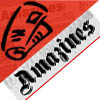|
The period commencing from the last few years of the 19th century produced a series of new ideas in physics, which were startling and revolutionary. In the begining of this period, there were a number of discoveries and development of new ideas. The following list gives a few of them. Electromagnetic theory (1873), Thermionic emission (1883), Electromagnetic waves (1887), Photoelectric effect (1887), X-rays (1895), Radioactivity (1896), Electron (1897), Quantum theory of radiation (1900), Theory of relativity (1905), Atomic nucleus (1-911), Bohr's theory (1913), Artificial transmutation (1919), Matter waves (1924), Quantum mechanics (1932), Neutron (1932), Artificial radioactivity (1934), Nuclear fission (1939), Nuclear reactor (1942), Semiconductor (1947), Transistor (1950). Some of the topics mentioned in the above list have been referred in earlier chapters and some are discussed in the subsequent chapters. The discovery of electron and atomic nucleus, the quantum theory of radiation and the theory of relativity changed the previous ideas about the structure of matter, nature of radiation, and about space and time. The period commencing from about 1890 can be considered as the era of atomic physics and nuclear physics referred to as modern physics. Historically, modern physics can be considered to have begun with the study of discharge of electricity through gases, spectroscopic studies and the discovery of electron. This marked the beginning of systematic study of structure of matter. STRUCTURE OF MATTER The nature of the structure of matter has been a subject of interest since very early times. Ancient people for example early Greeks and Indians had considered matter to be discontinuous. Philosophers of 4th and 5th centuries had regarded that matter consists of small indivisible and invisible particles spermata. An Indian philosopher nicknamed Kanada assumed matter to consist of small particles. In spite of these early views, there was no progress regarding the structure of matter till the beginning of the nineteenth century. In 1808, an English Chemist, John Dalton put forward his atomic theory in order to explain certain experimental facts about chemical combinations. The atomic theory was supported by the successful development of kinetic theory of gases. ELECTRON AND ATOMIC STRUCTURE: Electron During the decade 1895 to 1905, the old concept that atom is indivisible was discarded, when it was conclusively shown that atom has a structure and that it can be broken into its constituent particles. The atomic nature of electricity was assumed as far back as 1600 by Dr. Gillbert. Faraday's laws of electorlysis (1838) suggested the existence of a definite elementary charge. Faraday found that a charge of 96,500 coulombs is required to liberate one gm equivalent of a substance. If N denotes the Avogadro number, then 96500/ N, gives the amount of charge per ion as 1.6 x 10~19 coulomb. The fact that a value of charge lower than this is not observed implies that electricity is atomic. Subsequently, in 1891, Dr. Johnstone Stoney, a British physicist established the existence of these atoms of electricity. In 1897, J.J. Thomson* an English physicist established by his experiments on discharge of electricity through gases that electrons are common constituents of all matter. It was further established through the experiments of Thomson and Millikan** that electron is a negatively charged particle having a charge e = 1.6 x 10"19 coulomb and a mass m = 9.1 x 10"31 kg. Atomic structure After the discovery of radioactivity and the electron, interest in atomic structure became greater. Any structure proposed for atom must be in conformity with its known properties. The fundamental property is electrical neutrality of atom. Therefore, an atom must contain positively charged particles to balance the negative charge of electrons. Further the mass of an electron being very small, the mass of the atom is naturally associated with its positive charge. Thomson's experiments on positive rays provided evidence for the existence of positively charged particles in an atom. In 1911, Lord Rutherford*, a British physicist, proposed the basic structure of nuclear model of the atom. A brief account of atomic models is given in later chapter. Note: Atom consists of three fundamental particles, namely, electron, proton and neutrons. The atomic number (Z) of an atom represents the number of protons in the atom. The mass number (A) of an atom represents the total number of nucleons (protons and neutrons) in its nucleus. An element X is represented by The process of removal of one or more electrons from an atom is called ionisation. For example, if one electron is removed from a Helium atom it is said to be singly ionised. If particles carry excess of positive or negative charge, they are called positive ions or negative ions. TYPES OF ELECTRON EMISSION Electrons may be liberated from the surface of a metal by different methods. Different types of electron emission are (i) photoelectric emission (ii) thermionic emission (iii) filed emission (iv) secondary emission and (v) radioactive disintegration. (i) The liberation of electrons from a surface under the action of light of suitable frequency is known as photoelectric emission. (ii) Emission of electron from a metal surface by heat is called thermionic emission. (iii) The pulling out of electrons from a metal surface even at ordinary temperatures, by the application of a strong positive electric field, is called field emission, it is also called cold emission or cold cathode emission. (iv) When a metal surface is bombarded by high speed electrons there may be transfer of energy to the electrons within the metal if the energy transferred is sufficient, electrons will be liberated from the metal surface. This type of emission is known as secondary emission. (v) During the process of disintegration, some radioactive elements emit P rays, these P rays consist of electrons (It must be noted no external energy is required in this case). Now you can know more about this article 3 Types of Heat Transfer and 4 types of energy
Related Articles -
Introduction, to, Modern, Physics,
|




















